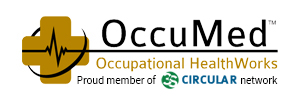Summer is drawing to a close, which means that schools are gearing up to reopen to students in less than a month. After the complicated 2020 school year, Massachusetts is requiring students to learn in person for the upcoming school year. This means that all students will be in the classrooms five days a week for the full days. Despite the recent uptick in COVID-19 metrics, the state is still planning for in-person learning, but protocols will be in place.
Recently, the Massachusetts Department of Education released guidelines outlining mitigation efforts and protocols that will help schools operate safely as students return to the classroom. In line with the CDC’s recently-released guidance, Massachusetts will first and foremost promote vaccinations for all eligible students, which currently are children 12 years old and above. Because of this, some schools and areas are organizing back-to-school vaccination clinics or are partnering with local clinics to provide simple ways for students to get vaccinated. Vaccination status should not be a roadblock for students to return to in-person learning, however. other key mitigation efforts will be in place to create safe and healthy environments.
Currently, the Department of Education and the Department of Public Health is strongly recommending the use of masks for all students in kindergarten through sixth grade, as well as unvaccinated seventh through twelfth graders while indoors unless they are eating. This does not include students who cannot wear masks for health purposes. Masks are also required when on school buses and in school health offices regardless of vaccination status. Of course, students are allowed to wear masks even if they fall into a group that does not require them. This state guidance does conflict slightly with the CDC’s recent masking guidance, which strongly recommends all students above the age of two, as well as staff and visitors, wear masks indoors.
Schools and districts are also encouraged to maintain thorough COVID-19 testing protocols and the state will continue to cover testing expenses. More information on diagnostic testing and pooled testing can be found here. The state also suggests that all districts sign up for the forthcoming statewide COVID-19 testing program once more information is released. Schools and districts must also maintain thorough quarantine protocols as well as flexible sick leave for staff members. The education and health departments will soon release information on “test and stay” programs that allows asymptomatic students considered close contacts to a positive person to continue in-person learning while receiving regular testing. It is recommended that districts stay up-to-date with this new program once it is released.
As it has been for the entirety of the pandemic, guidelines and protocols will likely shift or be revised as more information emerges. Schools and districts should keep in touch with students, their families, and staff with any and all updates, as well as useful information on how to return to school safely. Districts also should continue providing resources to promote proper hygiene, including providing sufficient soap and hand sanitizer, and continue to improve air ventilation as much as possible. Be sure to regularly check the Department of Education’s COVID-19 webpage, as well as the CDC’s Work and School COVID-19 webpage, for relevant updates.


